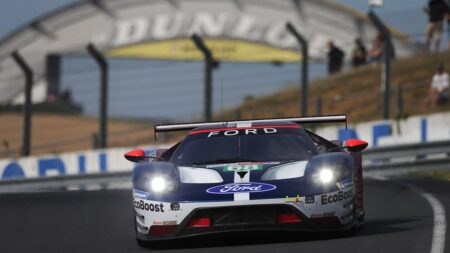
McLaren wants to win 2027 Triple Crown with Le Mans Hypercar
McLaren will enter the Le Mans Hypercar class for the very first time in 2027 – and is gunning to win motor sport's 'Triple Crown' all in one year
Future prototype regulations set out by WEC and ACO in press conference before 2018 Le Mans 24 Hours
Regulations for the World Endurance Championship’s prototype class from 2020-24 were outlined on Friday in a press conference before the Le Mans 24 Hours.
The five-year plan retains the hybrid system but aims to bring costs down and ensure competitiveness with a number of new rules.
Firstly, all cars will include a KERS (Kinetic Energy Recovery System) in the front, on a four-wheel-drive platform. Manufacturers will develop the KERS but the same system will have to be homologated on its road-going hypercars as per the rules.
Furthermore, the new cars will share aesthetics with road-going hypercars or supercars, with the FIA stating: ‘aerodynamics cannot take precedence over aesthetics’.
There will still be a free choice of engine aspiration, but the cost will be predetermined and fixed. The FIA aims for cars to lap Le Mans at 3min 20sec with reduced fuel usage, using a quarter of the current budgets.
As for the name of the new prototype class, the WEC will let it come down to a fan vote.
An esports tournament was also announced with the final taking place at Le Mans in 2019 using Microsoft’s Forza Motorsport 7 game as the platform. More details about the format will be revealed at Silverstone in August, but Fernando Alonso’s esports outfit will be taking part.
“The new regulations for the FIA World Endurance Championship, which come into effect for the 2020/21 season, are the result of hard work between members of the FIA, ACO, manufacturers and teams,” said FIA president Jean Todt. “This will provide endurance racing with along-termm, stable platform, while continuing to offer a cost-effective stage to showcase future technologies.”
ACO president Pierre Fillon added that the new regulations have “enormous potential”, while FIA Endurance Commission President Richard Mille praised the environmental and competitive measures in the new regulations.
“The new regulations are a framework that will be attractive to more manufacturers and teams, while at the same time retaining the excitement of endurance racing for existing fans to enjoy and to attract a new generation of spectator to the sport,” said Mille.
“The proposals announced today include cost-limiting measures, making hybrid power more affordable and building a future for endurance with renewable energy. From 2020 the front of the grid will look very different and it is an exciting prospect that we are all looking forward to seeing.”

McLaren will enter the Le Mans Hypercar class for the very first time in 2027 – and is gunning to win motor sport's 'Triple Crown' all in one year

A Ford GT40 MkII which managed 12 laps at the famous 1966 Le Mans 24 Hours has become been auctioned for a record amount

Two of racing's biggest rivals are on collision course once more, with the Ford v Ferrari battle for overall Le Mans victory due to resume in 2027 after six decades — and Ford is already talking up the fight

Ford will develop a new top-tier sports car to compete for overall victory in the Le Mans 24 Hours and the World Endurance Championship Hypercar class from 2027 onwards, aiming to continue where its GT40 left off in the 1960s